#National Museum in Krakow
Explore tagged Tumblr posts
Text

Jacek Malczewski (Polish 1854 – 1929)
Jesienią (In Autumn), 1890. Muzeum Narodowe w Krakowie (National Museum in Kraków)
Oil on canvas
#Jacek Malczewski#polish#19th century#oil painting#oil on canvas#Muzeum Narodowe w Krakowie#National Museum in Krakow#seasons#autumn
13 notes
·
View notes
Video
Jozef Mehoffer «In the summer apartment», 1904 by Art Therapy by Julianna Via Flickr: Oil on canvas; 150x80 cm. {59x31.4in} National Museum in Krakow, Poland
#National Museum in Krakow#art#artists#art therapy#paintings#portrait#portrait of woman#interior#musical instruments#flickr
0 notes
Text
Władysław Podkowiński - Study of a skeleton, 1892
In 1892 Władysław Podkowiński made a series of preparatory sketches with various views of skeletons, which were distorted into the oil composition "Skeleton Dance", probably created in the same year and now lost. National Museum in Krakow

95 notes
·
View notes
Text
GOLDEN FLEECE - THE ART OF GEORGIA
The National Museum in Krakow is already inviting you to the first not only in Poland, but probably also in Europe, such a comprehensive, panoramic and wide-ranging exhibition of Georgian art - from the oldest traces of human activity through stunning, ancient examples of Kolchida gold, stone steles of the early Middle Ages, the most ancient traces of human activity, enchanting ancient examples of Colchis gold, stone steles of the early Middle Ages, shimmering with a blaze of colours medieval illuminated codices, modern clothes, militaria, through landscapes illustrating the changing face of Tbilisi and paintings by Pirosmani, to avant-garde art of the 20th century, including the contribution to its development of Polish artists, who tied their lives to this beautiful and unusual country
ZŁOTE RUNO - SZTUKA GRUZJI
18.04-15.09.2024
#I so much wish to see it!😍 though I live quite far away from Kraków but why not make this an excuse to visit the town again?🥰#georgian culture#georgian art#georgia#საქართველო#art of georgia#art exhibition#kraków#krakow#poland#polska#national museum in krakow#muzeum narodowe w krakowie#mnk
1 note
·
View note
Text
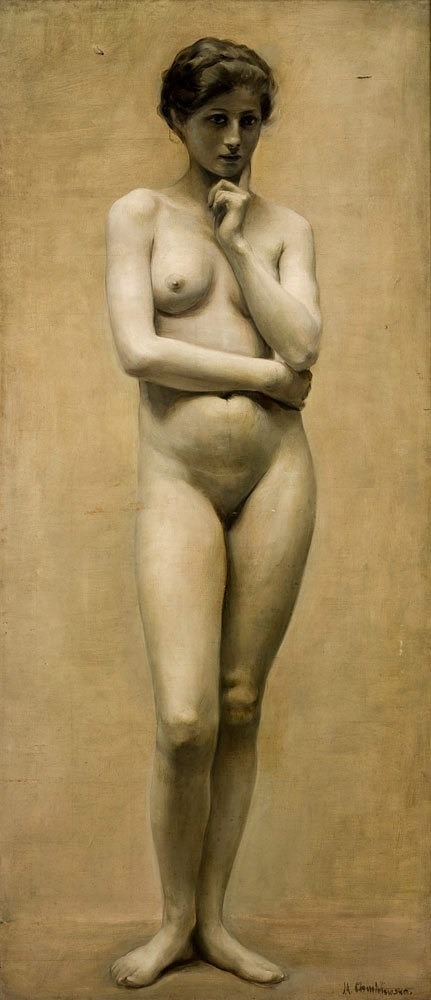
Maria Chmielowska (Polish 1867-1929), Akt kobiecy (Female Nude), 1895. Oil on canvas, 170 x 75 cm. (66.93 x 29.53) (Source: The National Museum of Krakow, Krakow, Poland)
#art#artwork#figurative art#nude art#artistic nude#female form#female subject#female figure#female nude#Polish art#Maria Chmielowska#The National Museum of Krakow
20 notes
·
View notes
Text
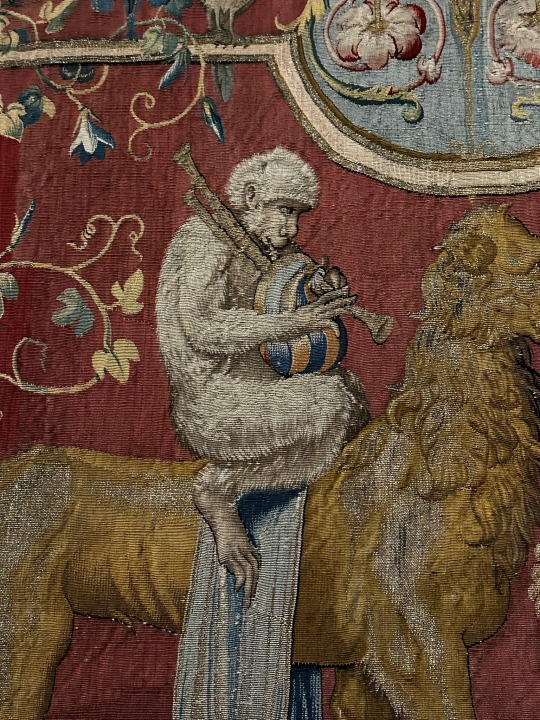

Detailed monkeys 🙈 🙉 🙊
(National Museum in Krakow)
#dark academia#dark academia aesthetic#bookworm#monkey#arras#museum#museumwalks#art#traditional art#light academia#slow life#slow living#national museum#krakow
9 notes
·
View notes
Photo
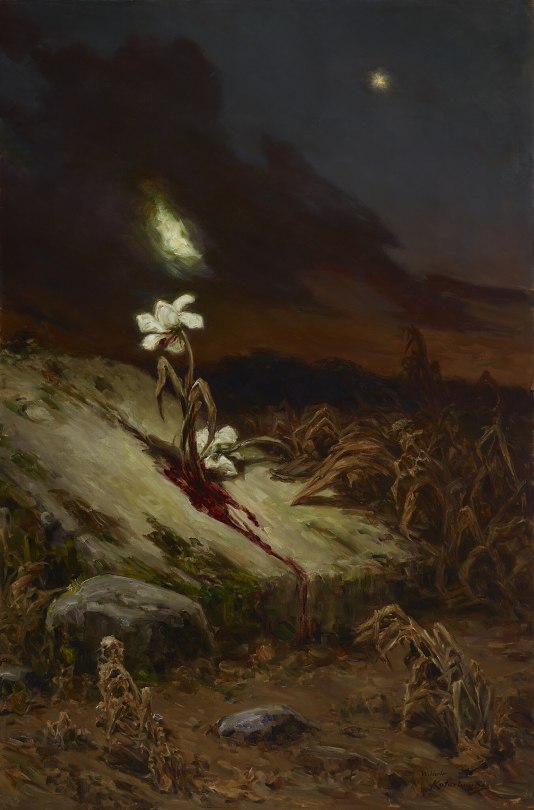
(vía Wilhelm_Kotarbiński_-_Tomb_of_a_Suicide_-_MNK_II-b-539_-_National_Museum_Kraków.jpg (Imagen JPEG, 1351 × 2048 píxeles) - Escalado (45 %))
Wilhelm Kotarbinski. Tomb of a Suicide. Painting. 212x142cm, circa 1.900.
18 notes
·
View notes
Text

THURSDAY HERO: Tadeusz Pankiewicz
Tadeusz Pankiewicz was a Polish pharmacist who helped the starving, suffering Jewish residents of the Krakow ghetto by providing them with medicine, food, and other lifesaving supplies.
Born in Sambor, Poland in 1908, Tadeusz studied at the prestigious Jagiellonian University in Krakow. In 1933 he took over the family business: a small pharmacy called Under the Eagle. Germany invaded Poland in 1939, but Tadeusz’s quiet life and successful small business were mostly unaffected, until 1941, when the Nazis forced the city’s 15,000 Jews into a ghetto.
Tadeusz’s pharmacy happened to be within the ghetto’s borders. The Nazis shut down other businesses and essential services in the ghetto to make it impossible for Jews to get food and other necessities, but Tadeusz refused to close his store. He bribed the Gestapo, using his own savings, to keep Under the Eagle open. Tadeusz was inspired by his Catholic faith to stay and help people however he could.
Conditions in the ghetto were horrific. There was never enough food, and every day residents died of starvation or illness; others were shot in the street by Nazi soldiers. Medicine of any kind was almost impossible to obtain, except from Tadeusz, who provided health care and pharmaceuticals for free to residents of the ghetto. He also provided them with lifesaving products such as hair dye to disguise their identity and tranquilizers to keep children quiet during Gestapo raids.
Tadeusz’s pharmacy became the go-to place for Jews to meet, plan underground activities and acts of defiance, and get lifesaving care and equipment. Tadeusz and his pharmacy employees Irena Drozdzikowska, Helena Krywaniuk, and Aurelia Danek put their lives at significant risk to help the Jews of the Krakow ghetto. Besides medicine, supplies and a safe place to meet, the brave pharmacist and his staff shared their meager wartime food rations, and hid Jews on the property during deportations. They were able to smuggle some Jews out of the ghetto and take them to hiding places where they would be safe.
Tadeusz actually befriended German soldiers to get information from them! He got them drunk and cleverly manipulated them into telling him about planned actions against Jews so he could warn them. Another service Tadeusz to the Jews trapped in the ghetto was acting as intermediary between them and the Poles with whom they left their valuables.
Among the people who met in secret in the pharmacy were prominent figures such as writer Mordechai Gebirtig and artist Abraham Neumann, who were tragically shot by the Germans in the ghetto in the infamous Bloody Thursday of June 4, 1942. Julian Aleksandrowicz survived the war to become a doctor and medical professor who specialized in the treatment of leukemia. Dr Abraham Mirowski, another Jew saved by Tadeuszm later said that the kind pharmacist was “living among us, was continuously exposed to dangers, but it did not make him scared. He was full of sympathy for our tragedy and wanted to help us with all his heart. Each death of a man or a woman was a traumatic experience for him.”
After the war, Tadeusz stayed in Krakow and, in 1947, he published his memoirs of life under German occupation. He continued working as a pharmacist. In 1957, some of the Jews he’d saved brought him for a visit to Israel as their guest. Tadeusz was honored as Righteous Among the Nations by Israeli Holocaust Memorial Yad Vashem in 1983.
Tadeusz Pankiewicz died in Krakow in 1993. His pharmacy is now a museum about the history of the Jews of Krakow, with special focus on the ghetto years. Tadeusz and his brave staff are also a featured museum exhibit.
For helping Jews in the Krakow ghetto, we honor Tadeusz Pankiewicz as this week’s Thursday Hero.
60 notes
·
View notes
Text

Stanisław Wyspiański (Polish, 1869–1907)
Agamemnon powstaje na Achillesa i Menelaosa (Achilles rises against Agamemnon and Menelaus), 1897. Muzeum Narodowym w Krakowie (national museum Krakow)
black-coloured pencil drawing on paper
#Stanisław Wyspiański#stanislaw wyspianski#polish#19th century#pencil on paper#classical#drawing#art#menelaus#agamemnon#achilles#iliad#Muzeum Narodowym w Krakowie#national museum Krakow
59 notes
·
View notes
Text
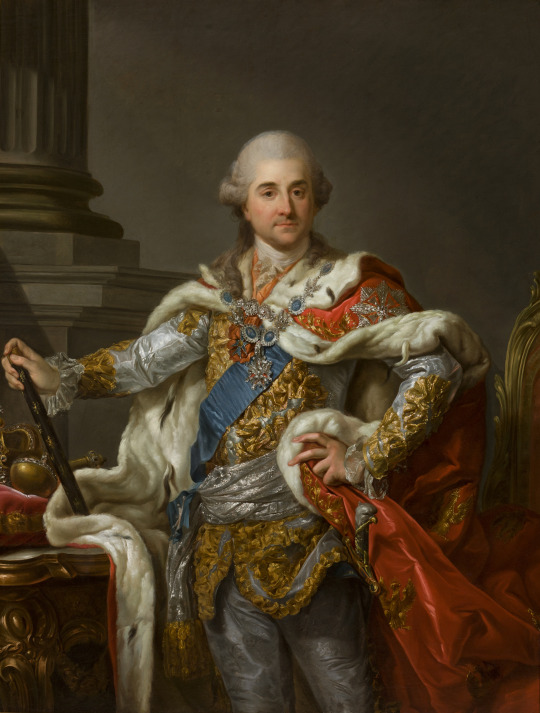
Portrait of Stanislaus Augustus Poniatowski in Coronation Robes
Artist: Marcello Bacciarelli (Polish-Italian, 1731–1818)
Date: c. 1790
Medium: Oil paint on canvas
Collection: National Museum in Krakow, Poland
Stanisław August Poniatowski
Stanisław August [Stanislaus Augustus] Poniatowski was elected king of Poland in 1764. Especially at the beginning of his reign, he was neither very popular with the nobility nor as influential as his rich family, the Czartoryski Familia. Therefore, he needed a formal portrait emphasizing the special significance of his person as the king of Poland and strengthening the conviction about the lawfulness of his rule, actually assumed with the considerable support of Russia. Moreover, European courts, for example in Vienna and Versailles, were interested in possessing a portrait of the new Polish king. The newly elected monarch sought a talented portraitist, familiar with the latest trends in Western European art, who would be able to paint a splendid formal portrait. He wished to entrust this task to Marcello Bacciarelli, an Italian painter who had stayed at the court of Augustus III the Saxon in Warsaw for several years, leaving in the country a large number of excellent portraits of aristocrats. The king did not want to be portrayed in armor, but in the formal dress that he was wearing during the coronation ceremony: a coat lined with ermine fur, decorated with Polish eagles, a frock coat and trousers, with his hand rested against the baton of the military commander and royal regalia lying on the table beside him. Taking the king's instructions into consideration, Bacciarelli painted the portrait following the en gala pattern dating back to the time of the French absolute rulers, but in the more recent Rococo style. The king's pose was light, refined, elegant and graceful, which was in tune with the fashion of the day. The monarch noted down in his diary that the portrait caught the best likeness of him.
#portrait#painting#oil on canvas#stanislaus augustus poniatowski#standing#coronation robes#three quarter length#classic pillar#stanislaus ii augustus#king of poland#grand duke of lithuania#polish monarchy#marcello bacchiarelli#italian painter#polish culture#polish history#artwork#fine art#european art#18th century painting
20 notes
·
View notes
Text
Some of the few remaining survivors of Auschwitz returned to the Nazi death camp on Monday, condemning a "huge rise" in anti-Semitism on the 80th anniversary of its liberation.
Auschwitz was the largest of the extermination camps built by Nazi Germany and has become a symbol of the Holocaust of six million European Jews. One million Jews and more than 100,000 non-Jews died at the site between 1940 and 1945.
"Eighty years after liberation, the world is again in crisis," warned Tova Friedman, 86, adding that "the rampant anti-Semitism that is spreading among the nations is shocking".
Along with Marian Turski, Janina Iwanska, and Leon Weintraub, Friedman was one of four former prisoners who spoke at the ceremony.
In total 50 fellow survivors gathered at the main commemoration outside the gates of Auschwitz II-Birkenau, joined by dozens of world leaders.
Earlier on Monday, elderly former inmates, some wearing scarves in the blue-and-white stripes of their death camp uniforms, laid flowers at the site, touching the camp's Wall of Death in silence.
"Today, and now, we see a huge rise in anti-Semitism and it is precisely anti-Semitism that led to the Holocaust," Turski, 98, warned those at the ceremony.
Weintraub, a 99-year-old Polish-born Swedish physician, asked for the young to "be sensitive" to intolerance and discrimination and condemned the proliferation of Nazi-inspired movements in Europe.
'Never be silent'
Also speaking at the ceremony, World Jewish Congress president Ronald Lauder said the horrors of Auschwitz and Hamas's attack on Israel on October 7, 2023 were both inspired by "the age-old hatred of Jews".
Anti-Semitism "had its willing supporters then, and it has them now," he said.
"On January 27, 1945 when the Red Army entered these gates, the world finally saw where the step-by-step progress of anti-Semitism leads. It leads right here."
"Today all of us must take a pledge to never be silent when it comes to anti-Semitism or for that matter any other hatred," Lauder said.
The streets of Oswiecim were mainly deserted except for police and fleets of official cars. The camp was closed to the public and largely silent except for the fluttering of the Auschwitz Museum flags.
Ukrainian President Volodymyr Zelensky, Britain's King Charles III and French President Emmanuel Macron and dozens of other international leaders attended the commemoration.
Organisers had however decided not to include political speeches to keep the focus on the survivors.
'Responsibility of remembrance'
In a statement, Zelensky said the world must unite "to prevent evil from winning".
Russia's President Vladimir Putin praised the role of Soviet soldiers in ending the "total evil" of Auschwitz.
Until its invasion of Ukraine in 2022, a Russian delegation had always attended the ceremony but Moscow was barred again this year.
Organisers said this could be the last major anniversary with such a large group of survivors.
"We all know that in 10 years it will not be possible to have a large group for the 90th anniversary," Auschwitz Museum spokesman Pawel Sawicki said.
"As the number of Holocaust survivors regrettably diminishes with the passage of time, the responsibility of remembrance rests far heavier on our shoulders and on those of generations yet unborn," King Charles said on a visit to Jewish community centre in Krakow on Monday.
Auschwitz was created in 1940 using barracks in Oswiecim, southern Poland. Its name was Germanised into Auschwitz by the Nazis.
The first 728 Polish political prisoners arrived on June 14 of that year.
On January 17, 1945, as Soviet troops advanced, the Nazi SS forced 60,000 emaciated prisoners to walk west in what became known as the "Death March".
From January 21-26, the Germans blew up the Birkenau gas chambers and crematoria and withdrew as Soviet troops approached.
On January 27, Soviet troops found 7,000 survivors when they arrived.
The day of its liberation has been designated by the United Nations as Holocaust Remembrance Day.
'Will they believe us?'
Ahead of the anniversary, survivors spoke to AFP about the need to preserve the memory of what happened in the death camp and warned of rising hatred and anti-Semitism. They also expressed fears that history could repeat itself.
Some 40 survivors in 15 countries told their stories, alone or surrounded by their children, grandchildren and great grandchildren -- proof of their victory over absolute evil.
Julia Wallach, who is nearly 100, cannot recall the events without crying.
"It is too difficult to talk about, too hard," she said. The Parisian was dragged off a lorry destined for the gas chamber in Birkenau at the last minute.
But hard as it is to relive the horrors, she insisted she would continue to bear witness.
"As long as I can do it, I will do it." Nearby, her granddaughter Frankie asked: "Will they believe us when we talk about this when she is not there?"
15 notes
·
View notes
Text





Krakow - National Museum
#aesthetic#art#artistic photography#dark academia#dark aesthetic#dark art#phylosophy#art history#art gallery#museum#art musuem#national museum#oil painting#painting
21 notes
·
View notes
Text

Death of Chopin
Date: Félix-Joseph Barrias (French, 1822–1907)
Date: 1885
Medium: Oil on canvas
Collection: The National Museum in Krakow, Poland
Description
The French artist Felix-Joseph Barrias, since he painted this work 46 years after the composer's death, may have used an account of Chopin's dying moments that was conveyed to posterity by Solange, George Sand's daughter and the sculptor Clésinger's wife: "One October afternoon in 1849, on the 16th, around twenty people were apprehensively waiting in the drawing room […]. Chopin wanted to know whether Countess Potocka was also in the drawing room and if she would like to sing closer, the door was wide open, and the beautiful countess started to sing. She was singing with her heart broken, with a voice full of tears! The people in the room dropped to their knees, choking back their sobs.”
The refined lady in white, standing by the piano, is probably Countess Delfina Potocka, who, according to tradition, sang the song "Pieta Signore" (Have Mercy Upon Me), which at the time was attributed to Alessandro Stradelli and is now attributed to the 19th-century composer Niedermayer. At one side of the bed, on the left next to a nun, Solange herself is kneeling; at the other side of the bed, Chopin's sister Ludwika is holding the dying composer's hand; in the foreground to the right, Marcelina Czartoryska, Chopin's pupil, and further at the window, Father Aleksander Jełowiecki, the painter Teofil Kwiatkowski (he left a series of beautiful pencil and watercolor sketches representing Chopin both at the piano and on his death bed) and Wojciech Grzymała.
Two Swedish researchers, Cecilia and Jens Jorgensen, argue that Barrias created the painting in collaboration with his pupil, Countess Winnaretta de Polignac (1865–1943), Edmond de Polignac's widow and a philanthropist and patron of artists and scientists. She was the daughter of Isaac Singer, the inventor of the sewing machine. Reportedly, he wanted to name the first model of the sewing machine he constructed after Jenny Lind (1820–1887), an eminent Swedish soprano singer and, since Hans Christian Andersen dedicated one of his fairy-tales to her, also known as the Swedish nightingale. She met Chopin in 1848 in London during one of his last tours in the city and was intending to marry the composer.
Two weeks after the artist's death, she arranged and paid for an extremely ceremonious funeral, which started with a mass held at l'Église Sainte-Marie-Madeleine, during which she sang arias from Bellini's opera. In 1851, she met Countess Winnaretta de Polignac, and it is possible that they made a decision together to commission a painting that represents Chopin in his dying moments. We know a little about how the work was created, but we know that it was the property of Countess Winnaretta, and later Count Campofelice. According to the Jorgensens, the woman that the painting represents in white while standing at the piano is not Delfina Potocka, but Jenny Lind.
#death bed#oil painting#europe#france#paris#chopin#classical composer#piano#men#women#felix joseph barrias#french painter#19th century painting#inside#mood#atmosphere#history
8 notes
·
View notes
Text
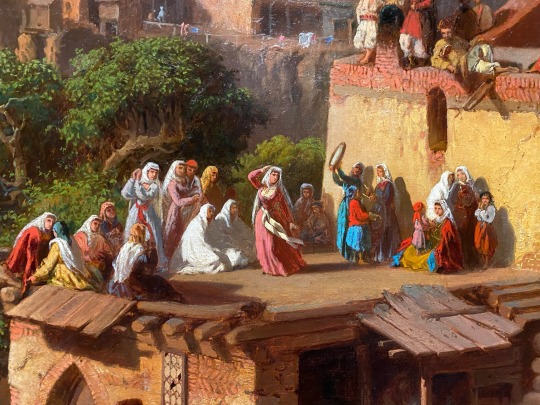

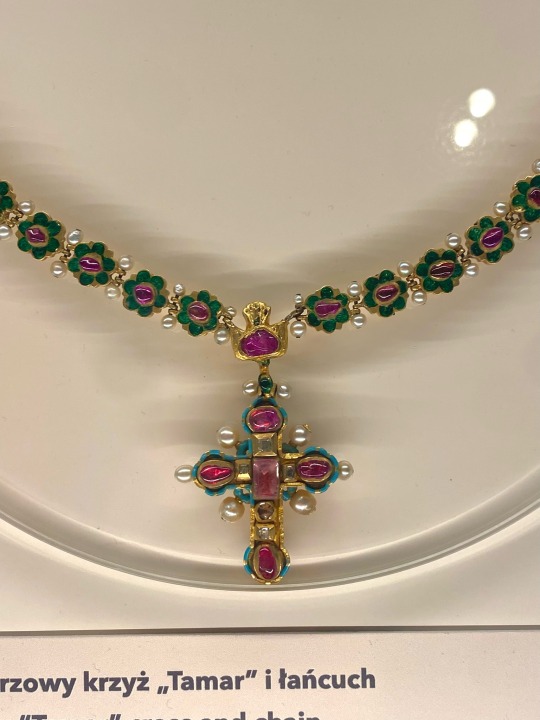
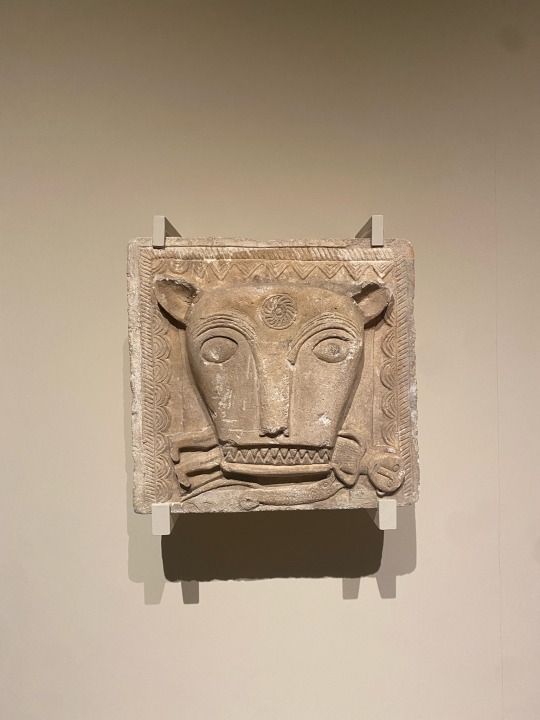
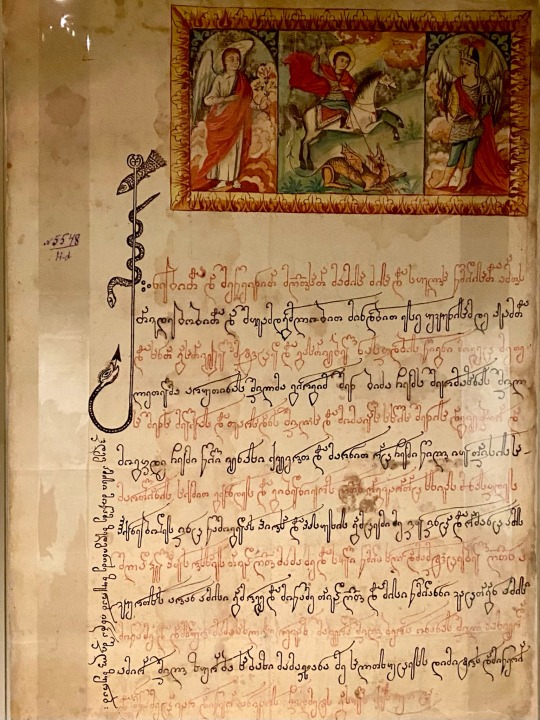
Georgian art and artifacts, seen in the National Museum in Krakow 05/25/2024
12 notes
·
View notes
Text
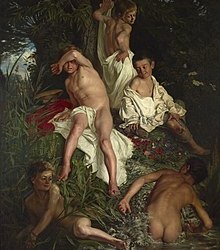
Kazimierz Pochwalski (1855-1940) Polish painter. "Boys bathing" 1877
The National Museum in Krakow
23 notes
·
View notes
Text
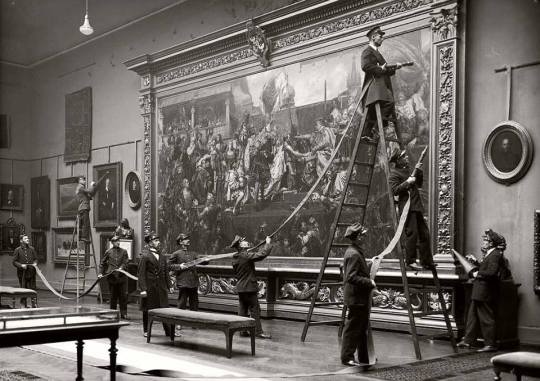
The National Museum in Krakow - Prussian Homage, Jan Matejko
18 notes
·
View notes
